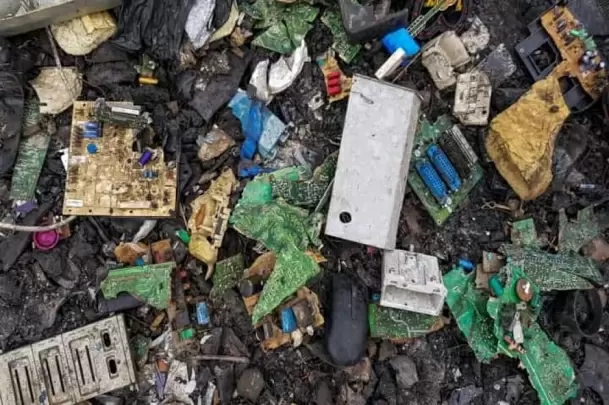E-waste in Commonwealth of Independent States rises 50% in decade
New Delhi
24-November-2021

PHOTO: IANS
Electronic waste generated in the Commonwealth of Independent States and Georgia rose by 50 per cent between 2010 and 2019, roughly the world average, but overall just 3.2 per cent was collected and safely managed, well below the 17.4 per cent average worldwide, according to the UN's first report on Wednesday dedicated to the e-waste issue in the 12 former Soviet Union countries.
The findings are published in the first-ever "Regional E-waste Monitor, CIS + Georgia," produced by the Sustainable Cycles (SCYCLE) Programme, co-hosted by the UN University (UNU) and the UN Institute for Training and Research (UNITAR), in partnership with the UN Environment Programme (UNEP).
According to the study, the region's e-waste spans a variety of products but three categories dominate: temperature exchange equipment (e.g. heating, air conditioning, and refrigeration units), and large equipment (e.g. washing machines or ovens) and small equipment (e.g. kitchen equipment or vacuum cleaners) account for 77 per cent.
The annual growth rate in the region has slowed in nearly all categories but remains positive. Only screens and monitors, and small IT equipment, show negative growth rates.
The Commonwealth of Independent States plus region has 289.2 million inhabitants (2019). The most populous countries are Russia, (143.9 million inhabitants in 2019), Ukraine (41.8 million), and Uzbekistan (33.2 million). Product purchasing power parity (PPP) varies greatly, from $3,000 a year in Tajikistan to $26,000 per year in Russia.
The amount of e-waste generated per inhabitant was highest in Russia (11.3 kg/inh) and lowest in Tajikistan (1.4kg/inh), strongly correlated with PPP.
Watch This TWL Video
"E-waste constitutes one of the fastest growing waste streams in today's global environment and poses a significant threat to both health and sustainable development," said Ruediger Kuehr, Director of the Sustainable Cycles Programme (SCYCLE).
"However, few countries collect internationally comparable e-waste statistics, and many countries lack the capacity to collect e-waste data at both the regional and national level. We need this data to track changes over time, establish national and international policies, limit e-waste generation, prevent illegal dumping, and promote recycling."
This Regional E-waste Monitor for the CIS + Georgia is the first of its kind, reviewing e-waste statistics, legislation, and management, created with the aim of enhancing understanding and interpretation of the problem and facilitating the environmentally sound management of e-waste.
"Such a summary allows for international comparisons and contributes to the development of more effective regional e-waste management systems," he added.
Co-author Kees Balde of the United Nations University underlined that managing e-waste could be an economic opportunity in the region by creating enterprises and thus jobs in the recycling sector.
E-waste generated in the CIS + Georgia in 2019 alone contained 10 tonnes of gold, half a tonne of rare earth metals, 1 million tonnes of iron, 85,000 tonnes of copper, 136,000 tonnes of aluminum, and 700 tonnes of cobalt -- representing a total value of $2.6 billion in secondary raw materials.
Meanwhile, hazardous substances in the region's 2019 e-waste included at least 2.4 tonnes of mercury, 1.1 tonnes of cadmium, 8,100 tonnes of lead, and 4,000 tonnes of brominated flame retardants -- threats to human and environmental health. -IANS
More Headlines
Karnataka Withdraws CID Probe in Ranya Rao Gold Smuggling Case
New Kerala Guv Strikes Cordial Tone, Hosts CM Vijayan And FM Sitharaman In Delhi
Digital Payments Surge in India: 18,120 Crore Transactions in FY24-25
Weather Dept Predicts Heavy Rains In Several TN Districts
Chitra Subramaniam’s Book Boforsgate Exposes Arms Trade, Corruption, and Political Intrigue
Karnataka Withdraws CID Probe in Ranya Rao Gold Smuggling Case
New Kerala Guv Strikes Cordial Tone, Hosts CM Vijayan And FM Sitharaman In Delhi
Digital Payments Surge in India: 18,120 Crore Transactions in FY24-25
Weather Dept Predicts Heavy Rains In Several TN Districts
Chitra Subramaniam’s Book Boforsgate Exposes Arms Trade, Corruption, and Political Intrigue










